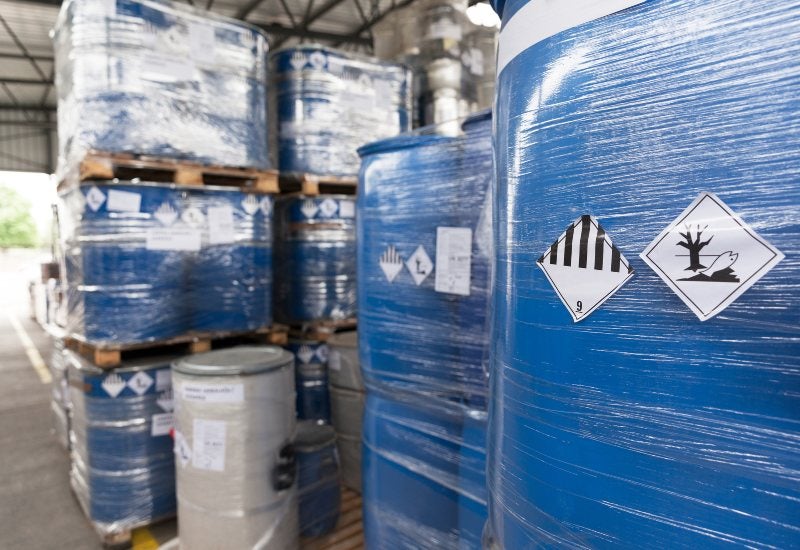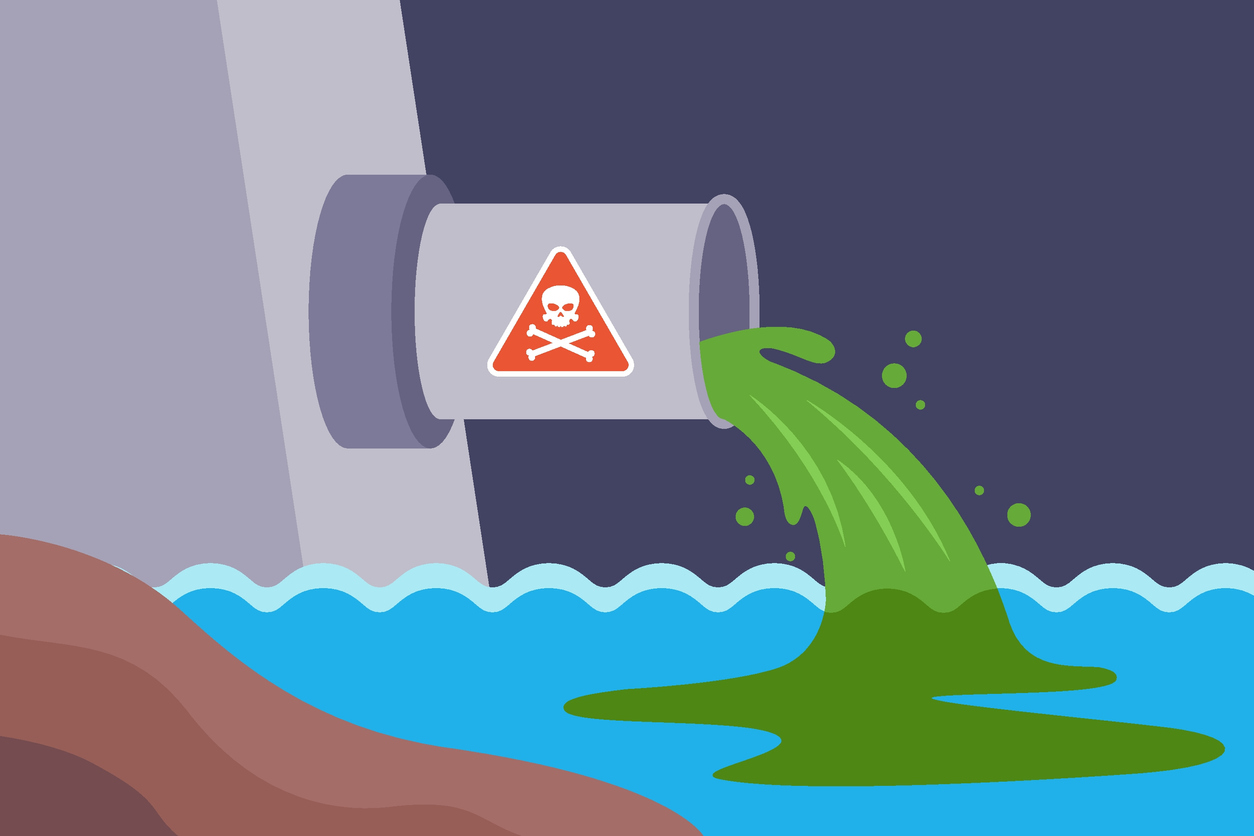Leading Industrial Wastewater Treatment Solutions: Making Certain Compliance and Performance
Wiki Article
Just How Liquid Garbage Disposal Works: A Comprehensive Review of Techniques and Technologies Used

Summary of Fluid Waste Kind
The complexity of fluid waste kinds necessitates a complete understanding of their qualities and effects for disposal. Liquid waste can generally be categorized right into a number of kinds, including industrial, municipal, agricultural, and unsafe waste. Each classification shows distinct properties, needing certain management methods to alleviate ecological and health dangers.
Industrial liquid waste originates from producing procedures and commonly includes an array of impurities, such as heavy steels, solvents, and organic substances. Metropolitan liquid waste, largely comprising wastewater from households and industrial facilities, has raw material, nutrients, and virus (industrial wastewater treatment). Agricultural liquid waste, consisting of drainage from farms, might have fertilizers, pesticides, and pet waste, posturing risks to water quality and ecological communities
Hazardous fluid waste is identified by its toxicity, sensitivity, or potential to cause injury. Comprehending these varied fluid waste kinds is critical for creating effective disposal techniques and making sure compliance with environmental regulations.
Physical Treatment Approaches

Screening is the preliminary step, where bigger particles and particles are eliminated from the fluid waste using displays or grates. In sedimentation storage tanks, larger bits clear up at the base, creating a sludge layer, while the cleared up liquid can be further dealt with.
Purification is an additional essential method that includes passing the liquid with porous materials, such as sand or membranes, to catch smaller sized particles. This action improves the quality of the liquid, making it ideal for subsequent treatment processes.

Chemical Therapy Methods
Chemical therapy techniques are important for successfully handling liquid waste, especially in attending to dissolved and colloidal impurities that physical methods may not sufficiently eliminate. These techniques use numerous chemical agents to reduce the effects of, speed up, or change dangerous compounds into much less dangerous kinds.One typical technique is coagulation and flocculation, where chemicals such as alum or ferric chloride are included in promote the gathering of put on hold fragments. This process enhances sedimentation, allowing for much easier removal of the resulting sludge. In addition, oxidation procedures, employing agents like chlorine or ozone, are utilized to damage down complicated organic compounds and pathogens, making the waste safer for discharge or further therapy.
Neutralization is another essential technique, which changes the pH of acidic or alkaline waste streams to neutral levels, avoiding possible harm to downstream systems and the setting. In addition, advanced oxidation procedures (AOPs) make use of mixes of oxidants and ultraviolet light to weaken relentless toxins, attaining a greater degree of therapy effectiveness.
Biological Treatment Procedures
Organic treatment procedures play an essential duty in the monitoring of fluid waste by making use of microorganisms to disintegrate raw material and reduce impurity levels. These processes can be broadly classified into cardiovascular and anaerobic therapies, each using certain microbial neighborhoods to attain effective waste deterioration.Aerobic therapy entails the usage of oxygen to promote the failure of natural materials by microorganisms. This process is commonly implemented in turned on sludge systems, where oygenation storage tanks supply a helpful setting for microbial development, causing the oxidation of natural contaminants. The resultant biomass can be divided from dealt with effluent through sedimentation.
On the other hand, anaerobic therapy takes place in the absence of oxygen, relying upon various microorganisms to break down raw material. This approach is particularly helpful for high-strength waste, as it generates biogas, a renewable resource resource, while decreasing sludge manufacturing. Technologies such as anaerobic digesters are frequently utilized in industrial and local applications.
Both cardio and anaerobic biological therapies not just decrease the environmental effect of fluid waste yet also help with source recuperation, making them vital parts of lasting waste management techniques. Their adaptability, efficiency, and performance sustain their prevalent execution throughout different sectors.
Arising Technologies in Disposal
Cutting-edge approaches to fluid garbage disposal are swiftly evolving, driven by advancements in technology and a raising emphasis on sustainability. Among these arising modern technologies, membrane layer bioreactors (MBRs) have acquired grip for their capability to combine organic treatment with membrane filtering, resulting liquid waste removal melbourne in high-quality effluent that can be reused in numerous applications. MBRs allow smaller footprints and a lot more efficient operations compared to conventional systems.Another promising advancement is the usage of anaerobic food digestion combined with nutrient healing modern technologies, which not just treats liquid waste however also produces biogas and recuperates useful nutrients like nitrogen and phosphorus. This twin advantage boosts resource efficiency and decreases ecological effect.
Furthermore, advanced oxidation processes (AOPs) are being adopted for the deterioration of complicated organic toxins. These techniques utilize powerful oxidants and catalysts to break down contaminants at the molecular degree, supplying a very reliable option for tough waste streams.
In addition, the assimilation of artificial intelligence and artificial intelligence in waste monitoring systems is maximizing operational effectiveness and predictive upkeep, causing decreased prices and enhanced environmental conformity. These technologies mirror a substantial shift towards more efficient and lasting fluid waste disposal methods.
Final Thought
In verdict, reliable liquid waste disposal necessitates an extensive understanding of various methods and technologies. By continuously advancing these methodologies, it comes to be feasible to resolve the expanding difficulties connected with liquid waste, inevitably adding to environmental protection and source recuperation.Fluid waste disposal is a crucial aspect of ecological monitoring, needing an extensive understanding of numerous methods and innovations tailored to various waste kinds. Fluid waste can extensively be categorized right into several kinds, consisting of industrial, municipal, farming, and dangerous waste. Agricultural liquid waste, consisting of overflow from ranches, might have plant foods, chemicals, and animal waste, presenting dangers to water quality and environments.
Various physical treatment approaches play an important duty in managing liquid waste efficiently - industrial wastewater treatment.In verdict, effective liquid waste disposal requires a detailed understanding of various strategies and modern technologies
Report this wiki page